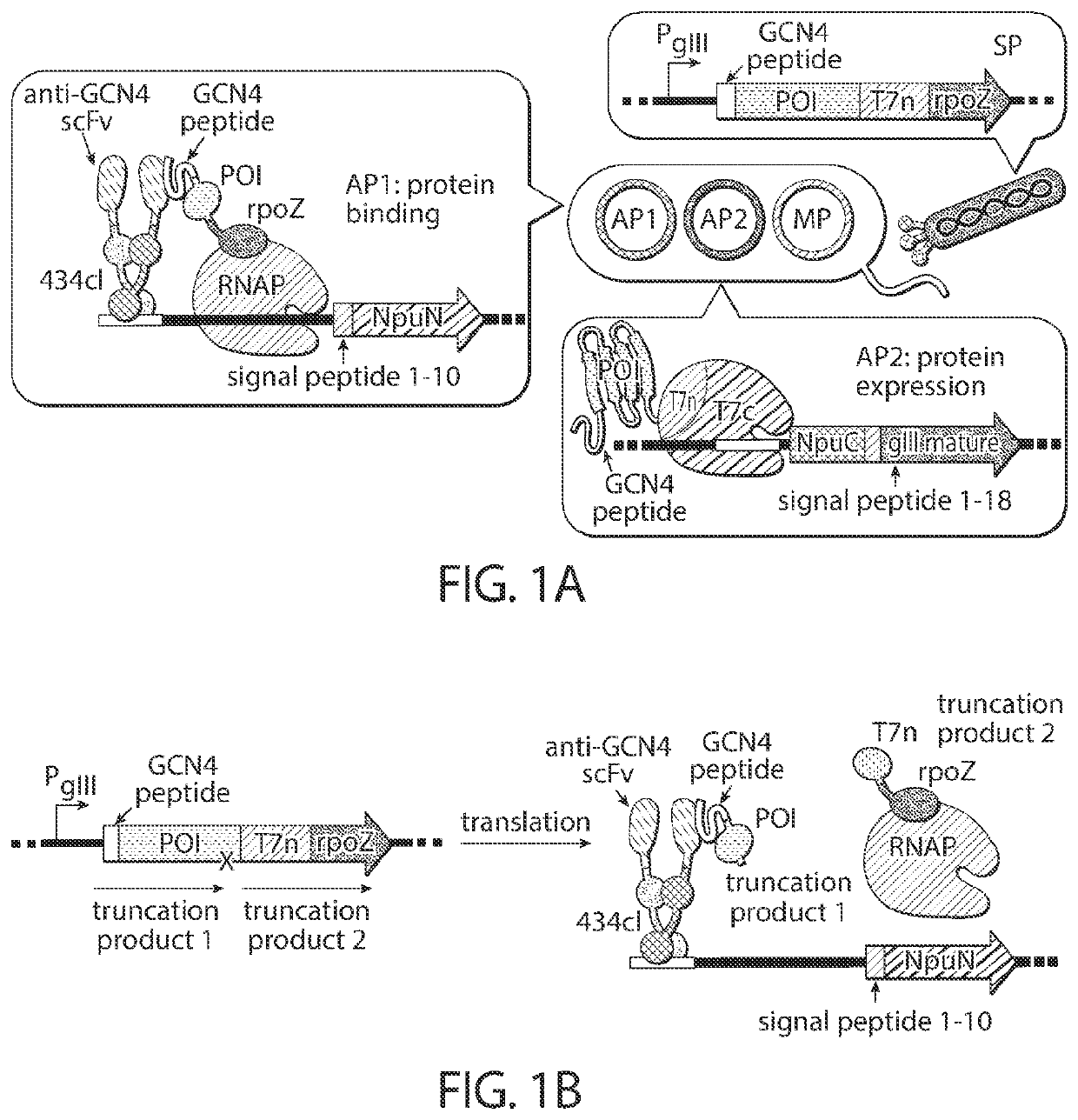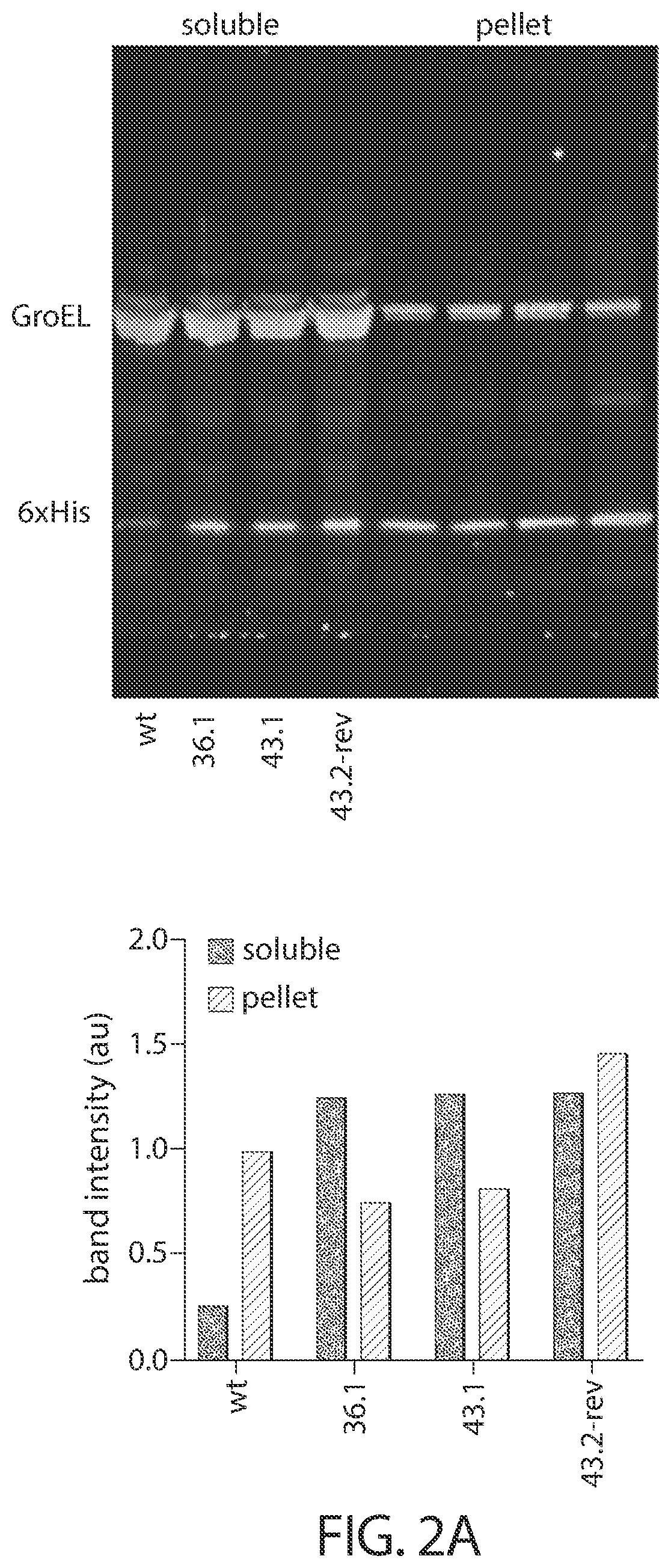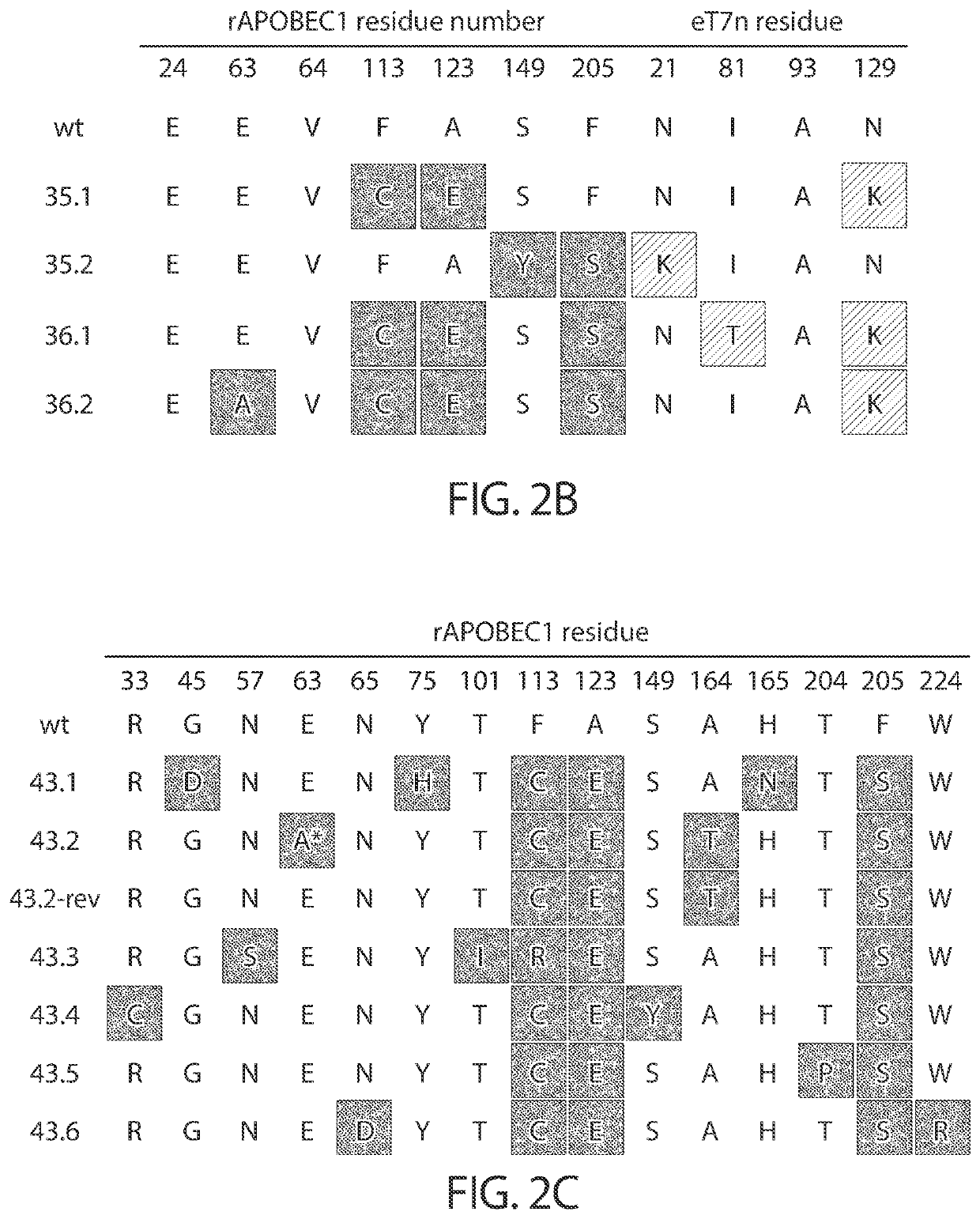Evolution of cytidine deaminases
a technology of cytidine and deaminases, applied in the field of cytidine deaminases, can solve the problems of difficult recombinant production of such proteins, and the inability of host cells to effectively replicate in the lagoon, and achieve the effects of improving the stability and/or solubility of cytidine, and reducing the time and human effort required to evolve a gene of interes
- Summary
- Abstract
- Description
- Claims
- Application Information
AI Technical Summary
Benefits of technology
Problems solved by technology
Method used
Image
Examples
example
[0145]General methods: Antibiotics (Gold Biotechnology) were used at the following working concentrations: carbenicillin 50 μg / mL, spectinomycin 50 μg / mL, chloramphenicol 25 μg / mL, kanamycin 50 μg / mL, tetracycline 10 μg / mL, streptomycin 50 μg / mL. HyClone water (GE Healthcare Life Sciences) was used for PCR reactions and cloning. For all other experiments, water was purified using a MilliQ purification system (Millipore). Phusion U Hot Start DNA polymerase (Thermo Fisher Scientific) was used for all PCRs. Plasmids and selection phages (SPs) were cloned by USER assembly. Genes were obtained as synthesized gBlock gene fragments from Integrated DNA Technologies or PCR amplified directly from E. coli genomic DNA. Plasmids were cloned and amplified using either Machl (Thermo Fisher Scientific) or Turbo (New England BioLabs) cells. Unless otherwise noted, plasmid or SP DNA was amplified using the Illustra Templiphi 100 Amplification Kit (GE Healthcare Life Sciences) prior to Sanger sequenc...
PUM
| Property | Measurement | Unit |
|---|---|---|
| Fraction | aaaaa | aaaaa |
| Fraction | aaaaa | aaaaa |
| Fraction | aaaaa | aaaaa |
Abstract
Description
Claims
Application Information
 Login to View More
Login to View More - R&D
- Intellectual Property
- Life Sciences
- Materials
- Tech Scout
- Unparalleled Data Quality
- Higher Quality Content
- 60% Fewer Hallucinations
Browse by: Latest US Patents, China's latest patents, Technical Efficacy Thesaurus, Application Domain, Technology Topic, Popular Technical Reports.
© 2025 PatSnap. All rights reserved.Legal|Privacy policy|Modern Slavery Act Transparency Statement|Sitemap|About US| Contact US: help@patsnap.com



